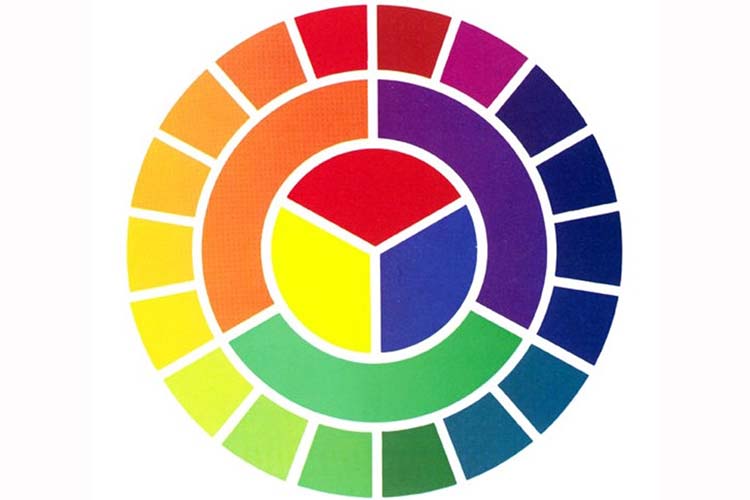
The ManicaPost

MAPPING colours to your clothes is as much science as it is an art.
You can have all the money in the world and flaunt the most expensive wardrobe possible, but if you do not marry the colours in your outfit well, it’s a lost cause.
You either need to have an eye for detail or understand the sensibilities of how colours work. Strike a balance, stay safe or go all out, whatever you choose to do, know the rules before you break them.
Take your favourite designers and carefully observe their work — all of them have their signature shades that they tastefully play around with.
How to match your clothes in an admirable fashion:
Even if you just scratch the surface of this one interesting aspect of styling, you will see a whole world of knowledge, and that’s what I’m going to help you with.
How to know what colours to match?
Using the right colours and matching them perfectly can be a deal maker. Choosing the perfect colour for an outfit is what sets you apart. And, that’s why colour and its theories continue to be the pivot for not just clothes, but everything else like interiors, hair, makeup, and much more.
To explain this further, let’s first understand the basis of this whole colour theory.
Primary colours
These comprise red, yellow, and blue. No two colours can be mixed to achieve these shades. Everything else is derived from these colours.
Secondary colours
Secondary colours are a combination of the primary colours. So, red+yellow = orange, red +blue = purple, and blue+yellow = green.
Tertiary colours
These colours are a combination of primary and secondary colours. By mixing these colours, you get shades like mint, aqua colours, corals, etc.
Hues of colours like red, orange, yellow, brown, etc are warm colours — they make things look smaller in size, and that’s why most of us prefer wearing warmer colours when we want to look slimmer. Cool colours, like hues of blue, purple, green, etc, are soothing colours.
Neutral colours
Neutral colours are self-explanatory. They are just muted, plain, and subdued. Black, grey, whites, off-whites, taupe, etc, fall into the neutral category.
What are the principles for matching colours?
One fundamental principle for matching your clothes, or for that matter anything, is combining colours that work in harmony. And, that’s what we need to remember while designing or putting our outfits together.
Red and green, violet and yellow, blue and orange — complementary colours, as the name goes, work best when put together.
These are exactly opposite to each other on the colour wheel. They might seem bold to look at, but the outputs will be perfect. If you observe carefully, your spring and summer clothing is mostly designed using complementary colours. While some might argue against this concept, it is actually a matter of choice as some like making bold statements.
Matching two or three continuous shades on the colour wheel that blend well with each other is called analogous colour matching. When you put an entire outfit together based on this, it looks both striking and stylish. If you are wondering how to style that orange or camel trench coat of yours, pick a shade on either side of the colour in the colour wheel and work with that.
Triadic
The combination of colours that are equidistant from each other on the colour wheel is called “triadic.” They look great together, but some might argue that they can be OTT. However, you can choose the muted shades of these colours to make your outfit. A pair of green cargos with a pastel pink top and powder blue accessories or shoes will look sophisticated and tasteful.
Keeping it in the family is a mantra you need to remember. The safest way to do this is by blending different shades of the same colour. However, that will inevitably get monotonous and boring very soon. Remember how we discussed complementary colours? (Red and green; violet and yellow; blue and orange). Play around with a combination of these colours; they will look great when put together.
Ombre is taking over everything from hairstyles and cakes to nail art and decor, and not to forget, outfits. Party-wear outfits, bridesmaid dresses or just a simple jeans and top in ombre can turn heads. Diminishing shades of the same colour either in ascending or descending order works great. If you are sporting separates, you need to bring it all together with the top, bottom, shoes, and accessories being in sync. Wear ombre outfits for your Christmas or winter parties, goes perfectly with the theme, and the weather too.
It seems like a no-brainer because it’s just one colour in the same shade for the entire outfit. However, it is the hardest to pull off, for obvious reasons. The good news is monochrome looks have caught up and are not considered weird anymore.
Start with comfortable and neutral colours like greys, blues, whites, and blacks, then progress to pastel undertones. Monochrome looks can be customised depending on the season or occasion. If it’s a formal set up, stick to neutrals, blues or whites, otherwise explore the pastels, yellows or even brighter shades if you please.
If it’s a printed or patterned outfit, let the print take over. Prints and patterns are usually a combination of one or more colours, so you must leave it at that. Keep the accessories in the neighbourhood; more colours only make it clumsier and unruly.
The balancing act
Another trick of the trade is to balance out any colours you choose to mix carefully. Anything done proportionately is a foolproof way of coordinating your outfit. Like they say, too much of anything is good for nothing. — www.stylecraze.com.



